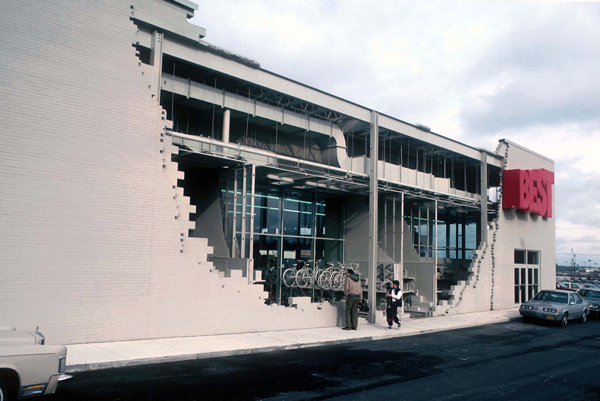BUILDING Business: Corporations, Architecture, and the Built Environment from McDonalds to the Medici

Corporations are said to be like people: "head" office buildings front the "bodies" of manufacturing sheds behind. But unlike people, corporations reconfigure themselves with astonishing speed and flexibility. Guided by capital, corporations perform according to its rules; they mutate quickly around economic requirements, or they die. Yet buildings are static, immobile, and slowly built, in sharp contrast to the increasing speed with which corporate capital moves its goods. Architecture promised the corporation an image, and yet refused to deliver it quickly, or to change it rapidly. This course on architecture and business focuses on the tension between architecture's solidity, and capital's fluidity, charting corporate development and occupied space in and around buildings and cities throughout the world. We move in reverse chronological order from tall buildings such as the proposed Tokyo Sky Mile Tower (2045), the Burj Khalifa, the Hong Kong and Shanghai Banking Corporation headquarters, and Chicago's many early towers, to other building types associated with the conduct of business: suburban malls and real estate development corporations, banks, quasi- or multi-national corporations, even monasteries. Six units include: non-place corporations, skyscrapers and the multinational, the City of London since WWII, the birth of the highrise and the American city, colonial corporations across the globe, and early monastic and banking corporations in Europe.
Textbooks/Other Materials: Course readings available on Canvas
Course Requirements: Attendance and participation are essential in this course. Five in-class workshops provide two midterm assessments; one final group project is arranged by section and presented at the end of the class by students. Reading ranges from 25-75 pp per week, or equivalent web content
Intended Audience: All undergraduate levels are welcome
Class Format: Biweekly lecture with workshops and discussion
Estimated Cost of Materials: $50-100
HISTART Distribution Requirements: D. Europe and the US, 3. Early Modern, 4. Modern and Contemporary
This course fulfils the LSA Humanities Distribution requirement